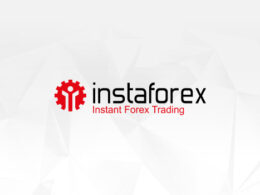Financial market volatility is up. And trade policy uncertainty is literally off the charts — just glance at this figure (Figure 1). As trade tensions flared, global stock prices dropped, even if many valuations remain high — here we have a snapshot of the market action (Figure 2).
This is a reminder that we live in a world of sudden and sweeping shifts. And it is a call to respond wisely. A better-balanced, more resilient world economy is within reach. We must act to secure it.
So let me lay out the story by addressing three basic questions. What is the context? What are the consequences? And most importantly, what can countries do?
Part one: What is the context?
Trade tensions are like a pot that was bubbling for a long time and is now boiling over.
To a large extent, what we see is the result of an erosion of trust — trust in the international system, and trust between countries.
Global economic integration has lifted vast numbers of people out of poverty and made the world as a whole better off. But not everyone benefitted. Communities were hollowed out by jobs going overseas. Wages were repressed by the growing availability of low-cost labor. Prices went up when global supply chains were interrupted. Many blame the international economic system for the perceived unfairness in their lives.
Trade distortions, tariff and nontariff barriers, have fed negative perceptions of a multilateral system seen to have failed to deliver a level playing field.
We see these distortions in the following two graphs. The first tells us that while for about 20 years the world saw a good convergence toward a low and stable US effective tariff rate, progress stalled in the last decade (Figure 3).
The second graph shows a count of the number, not the size of net new subsidy measures by major jurisdiction (Figure 4). An incomplete picture, but one that shows the broad direction: nontariff barriers on a rising trend.
This feeling of unfairness in some places feeds the narrative: we play by the rules while others game the system without penalty. Trade imbalances stir trade tensions.
Then comes national security. In a multi-polar world, where things are made may matter more than how much they cost. The logic of national security says that a broad range of strategic goods, from computer chips to steel, must be made at home, and that this is worth paying for. Self-reliance is staging a comeback.
All these concerns, taken together, have now bubbled over, leaving us in a world where industry gets more attention than the service sector; where national interests tower over global concerns; and where assertive actions trigger assertive reactions.
Let’s start with tariffs. Putting together all the recent tariff increases, pauses, escalations, and exemptions, it seems clear that the US effective tariff rate has jumped to levels last seen several lifetimes ago (Figure 5). Other countries have responded.
And then there are the spillovers. As the giants face off, smaller countries are caught in the crosscurrents. China, the EU, and the United States, despite having relatively low imports to GDP are the world’s three largest importers (Figure 6). Key implication? Size matters — their actions impact the rest of the world.
Smaller advanced economies and most emerging markets rely more on trade for their growth, and are thus more exposed, including to tighter financial conditions. Low-income countries face the added challenge of collapsing aid flows as donor countries pivot to dealing with domestic concerns.
What will be the impacts of these tensions? Let me offer three observations:
Ultimately, trade is like water: when countries put up obstacles in the form of tariff and nontariff barriers, the flow diverts. Some sectors in some countries may be flooded by cheap imports; others may see shortages. Trade goes on, but disruptions incur costs.
We will quantify these costs in our new World Economic Outlook, to be released early next week. In it, our new growth projections will include notable markdowns, but not recession. We will also see markups to the inflation forecasts for some countries.
We will caution that protracted high uncertainty raises the risk of financial market stress. Earlier this month, we saw unusual movements in some key bond and currency markets. Here, we see how, despite elevated uncertainty, the dollar depreciated, and US Treasury yield curves “smiled” — it is not the sort of smile one wants to see (Figure 7). Such movements should be taken as a warning. Everyone suffers if financial conditions worsen.
Conversely, our World Economic Outlook will also show that determined policy actions to resolve differences and rebalance can deliver better outcomes. This is what I want to address in the last part of my presentation.
What can countries do? A lot, and then some more
First, all countries must redouble efforts to put their own houses in order. In a world of higher uncertainty and frequent shocks, there is no room for delay in reforms to enhance economic and financial stability and improve growth potential.
Economies face the new challenges from a weaker starting position, with public debt burdens that are much higher than just a few years ago (Figure 8). As such, most countries must take resolute fiscal action to rebuild policy space, setting out gradual adjustment paths that respect fiscal frameworks. Some countries, however, may experience shocks necessitating renewed fiscal support; this, if it must be provided, should be targeted and temporary.
To protect price stability, monetary policy must remain agile and credible, supported by a strong commitment to central bank independence. Central bankers must keep an eagle eye on the data — including higher inflation expectations in some cases.
In finance, strong regulation and supervision remain essential to keep banks safe, and rising risks from nonbanks must be monitored and contained.
Emerging market economies should preserve exchange rate flexibility as a shock absorber. Policymakers can look to the IMF’s Integrated Policy Framework for insights on how and when temporary measures may be warranted.
Tighter budget constraints will entail difficult choices everywhere, but nowhere more so than in low-income countries. Here, weak revenues necessitate stronger efforts for domestic resource mobilization, but also call for support from international partners, both to improve capacity for reforms and to secure crucial financial assistance.
Countries with unsustainable public debt should move proactively to restore sustainability, including in some cases by taking the difficult decision to seek debt restructuring. I am very pleased to mention that the Global Sovereign Debt Roundtable will soon publish a playbook for country authorities considering debt restructuring — to help decision-making.
Policy tradeoffs can be eased by lifting growth potential. The US economy has seen strong productivity growth while others have slipped behind (Figure 9). How can they catch up? Through ambitious reforms in banking, capital markets, competition policy, intellectual property rights, and AI preparedness, all of which can contribute to higher growth. In many cases, the state can and should do much more to reduce obstacles to private enterprise and innovation, in other words, eliminate self-inflicted injuries.
The IMF will help countries manage macroeconomic adjustment and advance reforms. Currently, 48 countries are relying on our balance of payments support — including Argentina, where robust market-oriented reforms are now underpinned by our newest and largest program.
As a second hugely important priority, countries should renew their focus on internal and external macroeconomic imbalances.
Internal balances between savings and investment are fundamental, and can tilt too far one way or another. Here we illustrate with a sample of large countries and blocs, showing savings and investment rates as a percentage of GDP (Figure 10). Drivers of imbalances include national saving habits, policy-induced distortions, capital market openness, exchange rate regimes, demographics, and more. Fiscal, monetary, exchange rate, and structural policies provide key levers. Wherever rebalancing is needed, the work starts at home.
By definition, internal balances also drive external current account balances shown here in dollar amounts — and thus capital flows (Figure 11). In other words, rebalancing can enhance stability internally, externally, and globally. This is true on its own, given the risk of sudden stops to capital flows. And it is also true because, as noted, external surpluses and deficits can create fertile ground for trade tensions.
At the IMF we know that rebalancing is difficult. Current account surplus countries generally feel little urgency to adjust — they are exporters, not importers, of capital. And, on the other hand, countries with reserve currencies notably the United States, enjoy a special ability to sustain current account deficits. But the net result of sustained surpluses and deficits can be a buildup of vulnerabilities.
All countries can pursue policies for better internal and external balance, supporting collective resilience and wellbeing.
Let me zoom in on the three largest actors:
Reforms and rebalancing are for everyone. From ASEAN to the Gulf Cooperation Council, across the African continent and elsewhere, policymakers are taking action to strengthen their economies, improve regional ties, and reduce surpluses and deficits. We strongly support these efforts.
Finally, let me go to the third major priority — and the most pressing one by far: ensuring that there can be cooperation in a multi-polar world.
In trade policy, the goal must be to secure a settlement among the largest players that preserves openness and delivers a more-level playing field — to restart a global trend toward lower tariff rates while also reducing nontariff barriers and distortions.
We need a more resilient world economy, not a drift to division. And, to facilitate the transition, policies must allow private economic agents time to adjust and deliver.
Critically, resilience requires that attention be paid to policies to cushion the blows on those who lose out. Distributional policies form a fundamental bridge between good economics and good politics.
In sum, I fully expect that our Spring Meetings next week — as a gathering of 191 IMF member countries — will provide a vital forum for dialogue at a vital time. All countries, large and small alike, can — and should — play their part to strengthen the global economy in an era of more frequent and severe shocks.
Let me close by observing that in challenge there is opportunity. Pushed hard enough, things that were not possible become possible, mountains that couldn’t be climbed are climbed, vested interests that would not retreat are overcome. With cool heads, clear vision, and strong will, times of change can be times of renewal.
The secret to seizing the moment is to focus all energy not on preserving the old, but on building the new — a better balanced and more resilient world economy.







